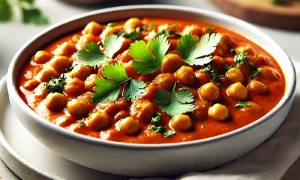Composting for Beginners: Essential Guide to Start Composting at Home

Composting is an accessible and rewarding way to recycle your kitchen scraps and yard waste into a nutrient-rich amendment for your garden. By breaking down organic matter, composting reduces landfill waste and creates a natural fertilizer, leading to healthier soil and plants. The process is straightforward—composting relies on the natural decomposition driven by microorganisms and requires only basic materials that are readily available to most households.
Key Takeaways
- Transform kitchen and yard waste into valuable compost to enrich garden soil.
- A successful compost pile requires a mix of green and brown materials and regular maintenance.
- Composting is a simple, year-round practice that benefits both your garden and the environment.
Basics of Composting

Before diving into the world of composting, it’s essential to understand composting is the natural process of recycling organic material like leaves and vegetable scraps into a rich soil amendment that gardeners fondly nick name black gold.
The Science Behind Decomposition in Composting
Composting relies on decomposition, the scientific process where microorganisms, including bacteria and fungi, break down organic matter into simpler compounds. This biological activity transforms your kitchen scraps and yard waste into nutrient-rich soil, beneficial for your garden. The process hinges on the right balance of organic material, moisture, and oxygen, which allows these microorganisms to thrive and decompose material effectively.
Key Factors in Decomposition:
- Carbon-to-Nitrogen Ratio: Balancing brown (carbon-rich) and green (nitrogen-rich) materials is crucial.
- Aeration: Turning your compost introduces oxygen, necessary for microorganisms to break down organic matter.
- Moisture: Your pile should be as wet as a wrung-out sponge to maintain microbial activity.
Benefits of Composting
Composting offers multiple benefits. Not only does it convert waste into valuable compost that enriches soil and helps garden plants flourish by improving soil structure and providing essential nutrients, but it’s also favorable for the environment. By composting, you reduce landfill waste and the production of methane, a potent greenhouse gas. This reduction supports overall environmental health.
Environmental and Garden Benefits:
- Soil Enhancement: Enriches soil, retains moisture, and suppresses plant diseases.
- Waste Reduction: Decreases the amount of organic waste sent to landfills.
- Climate Action: Helps minimize your carbon footprint by lowering methane emissions from landfills.
By composting, you actively contribute to soil health and reap the benefits in your own backyard, while also doing your part to protect the overall health of the environment.
Setting Up Your Composting System

When starting your composting journey, the correct setup is crucial for success. This involves selecting an ideal location, choosing a composting method that matches your needs, and ensuring you have all essentials on hand.
Choosing the Right Location
Your compost bin should be placed on level ground that’s easily accessible year-round. Ideally, it should be in a spot that gets both sun and shade throughout the day to facilitate breakdown but prevent overheating. Keep it near your garden if you have one, as this will make it easier to transport the finished compost.
Types of Compost Methods
There are several types of composting methods to consider:
- Compost Bins: These can be stationary and often suited for a small backyard setup. A basic compost bin must have ample ventilation and be made of durable materials.
- Compost Tumblers: These provide a more contained system, minimizing pests and simplifying mixing. A typical compost tumbler is a good choice if you want to speed up the process and have limited space.
- Open Piles: If you have a larger space, an open compost pile can be a simple and effective method. It requires more manual turning but is easy to set up.
Compost Management
Efficient compost management involves creating the right balance of ingredients, maintaining proper aeration, and regularly monitoring progress. To avoid common issues like unwanted odors or pests, you’ll need to adopt certain practices that encourage healthy decomposition.
Balancing Compost Ingredients
To start your compost bin, you’ll need a balance of browns (carbon-rich materials like straw, leaves, and cardboard) and greens (nitrogen-rich materials like kitchen scraps and grass clippings). Start with a layer of browns followed by a layer of greens, and top it off with a thin layer of soil to introduce microorganisms. Maintain a ratio of about 3:1 of browns to greens. Keep this mix moist and aerated for best results.
Turning and Aeration Techniques
Proper aeration is a crucial part of compost management to speed up the decomposition process. Using tools like a pitchfork or shovel, turn your compost pile every one to two weeks to introduce oxygen, which is vital for your microbes to thrive. This also helps distribute the heat evenly throughout the compost pile.
Monitoring Compost Progress
Keep an eye on the temperature of your compost pile; it should remain between 130°F and 160°F. If it’s cooler, it may need more green materials or turning. On the other hand, if it’s too hot, add more brown materials and check that it’s not too wet.
Troubleshooting Common Issues
Common problems related to compost management include foul smells, pests, and sluggish decomposition. If your compost has a bad odor, it might be too wet or lack sufficient browns. To deter animals and pests, ensure you bury food scraps deeply within the compost pile and cover with browns. If decomposition is slow, check that your pile is moist enough and consider adding more greens to provide necessary nitrogen for your microbes.
Utilizing Finished Compost

As a beginner in the world of composting, you’ll find that using finished compost can be both rewarding and beneficial for your garden. Finished compost is a nutrient-rich soil amendment that serves multiple functions, from fertilizer to soil conditioner, ensuring that your plants thrive.
When Is Compost Ready?
Finished compost often resembles dark, crumbly topsoil and should possess a pleasant, earthy smell. Here are the tell-tale signs that your compost is ready for use:
- Color: rich, dark brown
- Texture: crumbly with no recognizable food or yard waste
- Smell: earthy, like forest soil with no foul odors
Use a manure spreader or turn the piles with a shovel or pitch fork to make sure your compost reaches this stage effectively.
How to Use Compost in Your Garden
Once your compost is mature, it’s time to enrich your garden soil. Here’s how to apply your finished compost:
- Soil Amendment: Mix the compost into the top few inches of your soil to improve its structure and nutrient content.
- Planting: When planting new plants or flowers, add a handful of compost to each hole to give your plants a healthy start.
- Top Dressing: Sprinkle compost around existing plants to slowly integrate nutrients without disturbing the roots.
- Lawn Care: A thin layer of compost over your lawn can encourage lush, green growth.
Remember, nutrient-rich compost provides a slow-release supply of nutrients, making it an excellent, sustainable fertilizer for gardeners. Your plants will benefit from the healthy boost that compost gives without the risk of chemical fertilizers.
Composting Throughout the Year

Composting is an ongoing process that can be adapted to suit any season. With the right approach, you can maintain a thriving compost pile throughout the year, adjusting your methods to meet the changing conditions of each season.
Seasonal Composting Tips
Spring:
As the temperature starts to rise, your compost pile will naturally become more active. Make sure to turn your compost regularly to aerate it and speed up decomposition. This is also the perfect time to add fresh green materials like grass clippings or garden waste to your pile, as they are rich in nitrogen and help to heat up your compost.
Summer:
The warmer months provide ideal conditions for hot composting. Aim to maintain a balance of green (nitrogenous) and brown (carbon-rich) materials in your compost to keep it hot and decomposing quickly. Ensure you’re keeping the pile moist, as hot temperatures can dry it out, but avoid making it too wet, which can lead to odors.
Autumn:
During autumn, your garden likely provides an abundance of brown materials in the form of fallen leaves. Gather these leaves and mix them into your compost pile for carbon content. It’s also a good time to harvest compost from earlier in the year to use for your garden beds.
Winter:
Cold temperatures can slow down the composting process, but you can still compost during winter. Insulate your pile with a layer of straw or leaves to retain heat. While decomposition slows down, it does not stop; keep adding kitchen scraps to the pile over the winter, but turn it less frequently to maintain the internal temperature.
By understanding and responding to your environment and the seasonal changes, you can effectively compost throughout the year and provide your garden with rich, nutritious soil that supports healthy plant growth.
Frequently Asked Questions
How do you start a compost pile for beginners?
To start a compost pile, find a suitable location in your yard that is level, well-drained, and accessible. Begin with a layer of coarse material like twigs for aeration, then alternate layers of greens (kitchen scraps) and browns (leaves, paper).
Which materials are essential to start a compost bin?
Essential materials for starting a compost bin include green nitrogen-rich materials like vegetable scraps, fruit peels, and coffee grounds, as well as brown carbon-rich materials such as dried leaves, straw, and cardboard.
What is the first rule of composting to ensure successful decomposition?
The first rule of composting to ensure successful decomposition is to maintain the right balance between greens and browns – your compost should have roughly an even mix of both to optimize microbial activity and speed up the composting process.
What items should be avoided in compost to maintain a healthy pile?
Avoid adding meat, dairy, oily foods, diseased plants, and pet wastes to your compost as these can attract pests, cause unpleasant odors, and potentially spread disease.
Which type of compost setup is recommended for a beginner?
A beginner should opt for a simple compost system like a contained bin or tumbler, which is easy to manage, helps maintain moisture and temperature, and is less attractive to pests.
Can composting be done effectively in an apartment setting?
Yes, composting can be done effectively in an apartment using a special indoor compost bin, such as a Bokashi bucket or vermiculture kit, which are designed to fit small spaces and control odors.






